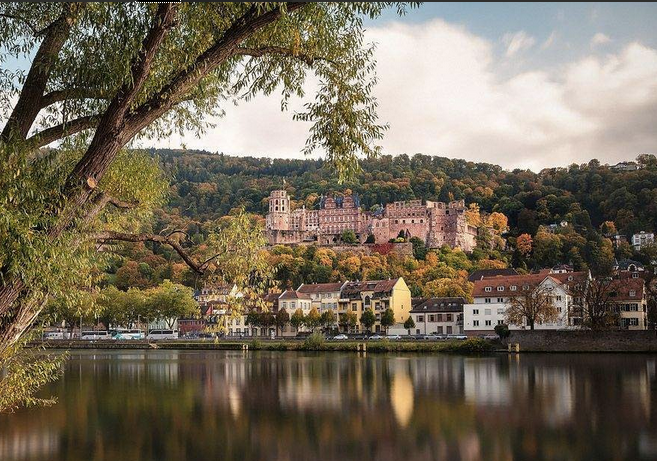
In a country as broad and deep in history as Germany, you will discover some of the world's most spectacular castles – from ancient citadels to imperial palaces. When planning a trip, it can get confusing to decide which are the best castles to visit. With thousands spread throughout the countryside, how can you choose? From the Disney-like Neuschwanstein to Instagram-famous Burg Eltz, you can be sure that each castle is as awe-inspiring as all the others. Here are the dreamiest fairytale castles in Germany.
Burg Hohenzollern
Hohenzollern lies in Southern Germany and near the Black Forest. Still privately owned by the Royal Family, their flag flies at the Tower when they're home. The striking fortress offers a grand panoramic view stretching over more than 100 km. Burg Hohenzollern is one of the most famous castles in Germany, with over 300,000 visitors each year.

Burg Eltz
Eltz Castle in Western Germany has risen in popularity with at advent of social media. With its charming ambiance, enclosed by thick, dark, and mysterious woods, it is a favorite of many photographers on Instagram.
This medieval castle was never destroyed, even during the most turbulent historical periods.
Schloss Drachenburg
Can you believe that this beautiful castle in Germany is a private villa? Drachenburg dates the 19th century and lay in lovely Konigswinter. It is only a 30-minute drive from Cologne. A beautiful park surrounds the castle making it the perfect spot for a romantic stroll.
Schloss Schwerin
Remarkably beautiful, the Schwerin Castle located in Northern Germany settled on a lovely lake. The Schloss and the surrounding lake form a dramatic fairytale-like landscape. Records indicate that the first fortress dates from the 10th century. The oldest components of the current castle date back to the 16th century.
Schloss Schwetzingen
Have you heard of the pink palace near Heidelberg? You will learn more about it soon! Schwetzingen was the Heidelberg family's summer residence and hunting lodge. An expansive garden surrounds the castle, where you can find temples devoted to the Ancient Greek gods, an orangery, and a pink mosque. These garden mosques were very popular in the 18th century because royals believed they would show their understanding, compassion, and cosmopolitanism. But in reality, mosques were meeting places for foreign diplomats, not religious leaders.
Heidelberger Schloss
The massive sandstone Heidelberg Castle is one of the most significant surviving examples of German Renaissance design. It overlooks the Old Town in Heidelberg lying 200 meters below and forms a backdrop visible from virtually any Neckar River point. It dates from 1300, and a century later, Prince Elector Ruprecht III chose it as his regal residence. The castle remained a royal home until the French set it ablaze in both 1689 and 1693. A third fire left it uninhabitable, but it remains the best— and largest — castle ruin in Germany.
Schloss Hohenschwangau
In Bavaria, Hohenschwangau Castle is a 19th-century palace; it was the childhood home of King Ludwig II of Bavaria. King Maximilian II, Ludwig's father, initiated the building, which began in 1833. Domenico Quaglio was in charge of the neogothic design. Over 90 wall paintings in the court depict the history of Schwangau and medieval German romances.

Burg Rhinestein
The beautiful Rhineland-Palatinate region possesses gorgeous historic buildings, and the Rheinstein Castle is one of the areas most beautiful. Near my home town of Frankfurt, overlooking River Rhine, the castle once held a crucial location that now excels in its romantic beauty. Typical for medieval buildings, the court possesses a functioning drawbridge as well as a portcullis. The chapel features a fantastic Gothic altarpiece.
Schloss Lichtenstein
Perched on a craggy outcrop at the Alps' edge and reached by a narrow wooden bridge, Lichtenstein Castle is more than it appears to be. Although this mountain was the site of several earlier castles, its walls are the 1800s medieval Lichtenstein castle base. The height accentuates its steep walls and tall round tower. It is accessible by a narrow bridge over a ravine; the bridge completes its story-book charm.
Schloss Herrenchiemsee
Herrenchiemss is known as the Bavarian Versailles; King Ludwig II built it in 1878. He wanted a palace on Herreninsel island that rivaled Versailles's grandeur in France. Like Ludwig's other castles, Schloss Herrenchiemsee was a private residence for the reclusive king, who wanted to withdraw from public life. Unfortunately, he was only able to spend about ten or so days there in the summer of 1885. He wasn't able to complete the castle because the king died in the summer of 1886.

Burg Cochem
Cochem Castle overlooks the beautiful Moselle River and the lush green winemaking region in Western Germany. Louis XIV destroyed the original building in the 17th century. Left in ruins, a businessman from Berlin bought and rebuilt the castle. Initially, in a Romanesque style, the rebuild was in a neo-Gothic style, adding an Octagonal Tower and the Witches Tower.

Neuschwanstein Castle
There are two types of castles strongholds, intended for defensive purposes, and castles built for fun that appear magical and otherworldly. Neuschwanstein Castle belongs to the latter category. This 19th-century Romanesque castle is the most famous castle in Germany and one of the world's most picturesque. Commissioned and built by Ludwig II of Bavaria, it is a fantasy brought to life. Perched hillside amidst charming surroundings, everyone is awed when they see Neuschwanstein in person. The castle was the inspiration for Disney's Cinderella Castle.
With as many as 20,000 Schloss in Germany, you will have plenty from which to choose. They range from the poster child of castles — Neuschwanstein — to little-known medieval strongholds. Palaces are so numerous in Germany that I can only spotlight a small fraction of them. These are the dreamiest fairytale castles in Germany.









Comentários